For companies who rely on organic search as a key revenue driver, SearchGPT could pose a new challenge to hold onto organic visibility. Search has seen a ton of changes in the last few years and more is on the horizon. SearchGPT isn’t just about having a new search engine. It represents a fundamental shift in search. AI answer engines and foundational LLMs (Large Language Models) are the building blocks to innovation in the industry.
ChatGPT has 3 billion, with a ‘B’. monthly visitors with over 450 million active users. Where would these searches have gone before? Google. OpenAI launching SearchGPT is signaling a larger change in the space. AI Answer Engines are more capable to give summarized and personalized answers so users can skip the blue links and find quick and specific value.
Can OpenAI disrupt the long-lasting presence of Google as a dominant search engine? While they try to make the switch, marketers and SEOs will also have to make some changes to tactics and approaches to content as generative AI searches evolve. Lace up your shoes as we walk down the path to AI searchability and let’s discuss the different methods and strategies to consider when optimizing for SearchGPT SEO.
Jump To A Section:
- What is SearchGPT?
- The Importance of SEO in SearchGPT
- SearchGPT vs Google
- Key Features of SearchGPT
- SearchGPT SEO & AI Search Strategies
- SearchGPT & AI SEO Trends
What is SearchGPT?
SearchGPT is a prototype search engine developed by Open AI. SearchGPT combines the power of traditional search with vast and ever-developing capabilities of generative AI. While SearchGPT is founded on many of the same principles as other search engines like Google, it has some features that set it apart.

The aim of SearchGPT is to make finding answers faster, easier, and more interactive. SearchGPT has real-time information from relevant sources allowing the search engine to provide a variety of well-vetted results from a range of sources to help answer your questions.
OpenAI also takes aim at Google with a deeper layer of conversational search. While Google attempts to eliminate follow-up searches, it doesn’t always let you get to the bottom of things in the SERP. Instead of going back to the search bar to perform a follow-up search, SearchGPT is highly conversational and allows for quick, rapid-fire questioning that may seem out of place on other platforms.
The Importance of SEO in SearchGPT
The reason why SearchGPT & AI Search SEO are so important is because Google has had some hardships since the launch of AI Search Summaries and companies like OpenAI are there to expose these vulnerabilities and take away search market share.
With Google recently rolling back search summaries and showcasing a slew of initial problems, it’s a race to see who can do it better. Since the launch of their AI search summaries, Google has reduced the prevalence of these results from 15% to now below 7%. The reduction comes from a lack of accuracy and trustworthiness of AI-generated results.
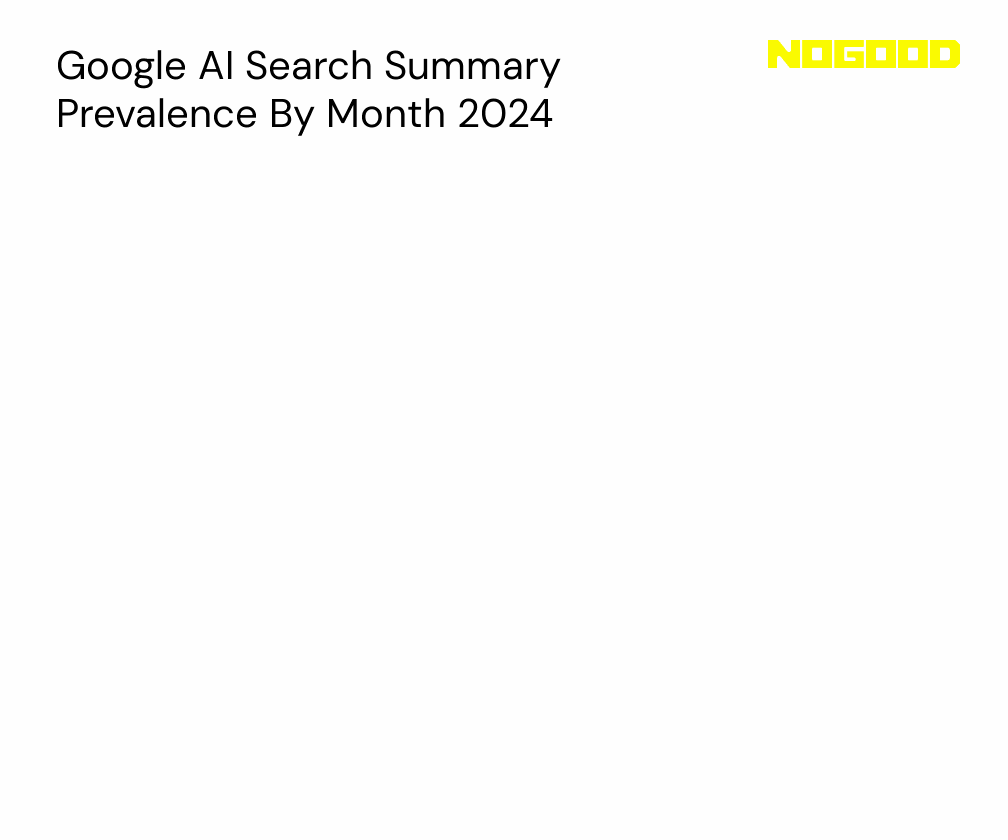
If it couldn’t get any worse, after the reduction of these AI summaries, Google lost its legal case and is found to be monopolizing search. This double-punch exposes why SEO for SearchGPT and other AI searches are so important, Google isn’t invincible. To remain organically visible, SEOs and marketers everywhere need to continuously adapt to the changing search functions and avoid putting all their eggs in one (search engine) basket.
SearchGPT vs Google
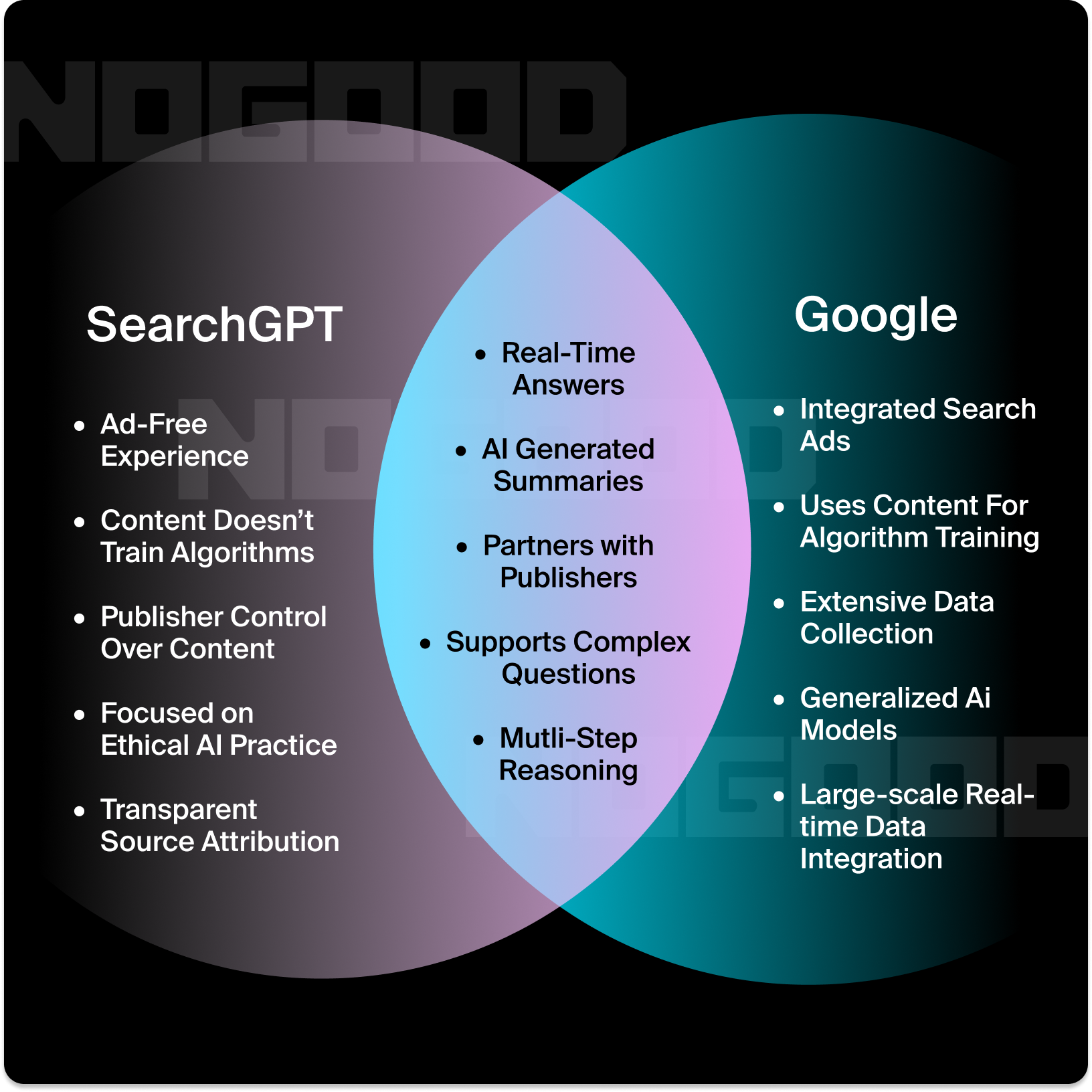
Key Features of SearchGPT
If you plan to go up against Google, you better bring some firepower. SearchGPT does just that. To take down a giant like Google, you’re going to need to offer something clearly better to get the majority of the population to switch. If you’re a die-hard Googler, will any of the following features sway you?
1. Ad-Free Experience
The SearchGPT interface offers an ad-free experience. You could argue that OpenAI is putting all of its effort into providing clear and accurate information rather than looking for a new revenue stream. While the ad-free experience might not last forever, it’s certainly worth trying to encourage people to try the new search platform.
An ad-free experience is designed to give the user the ability to find information without distracting ads or being influenced by unrelated results. Could this alone be the death of Google? Maybe, probably not, but it’s certainly a big development in the world of search. Having a search engine dedicated to search instead of clouded by ads and mixed results could be a big win for consumers.
Are ads a bad thing though? Some ads are very targeted and serve a purpose. OpenAI may be weighing the pros and cons of including ads in their platform until they understand how users interact with it first.
2. Conversational Interface
The conversational interface is a stark difference between the ones we’re used to with Google. The interface is modeled to function like a regular dialogue box with an AI assistant. You ask a question, receive an answer, and follow up if needed, simple right?
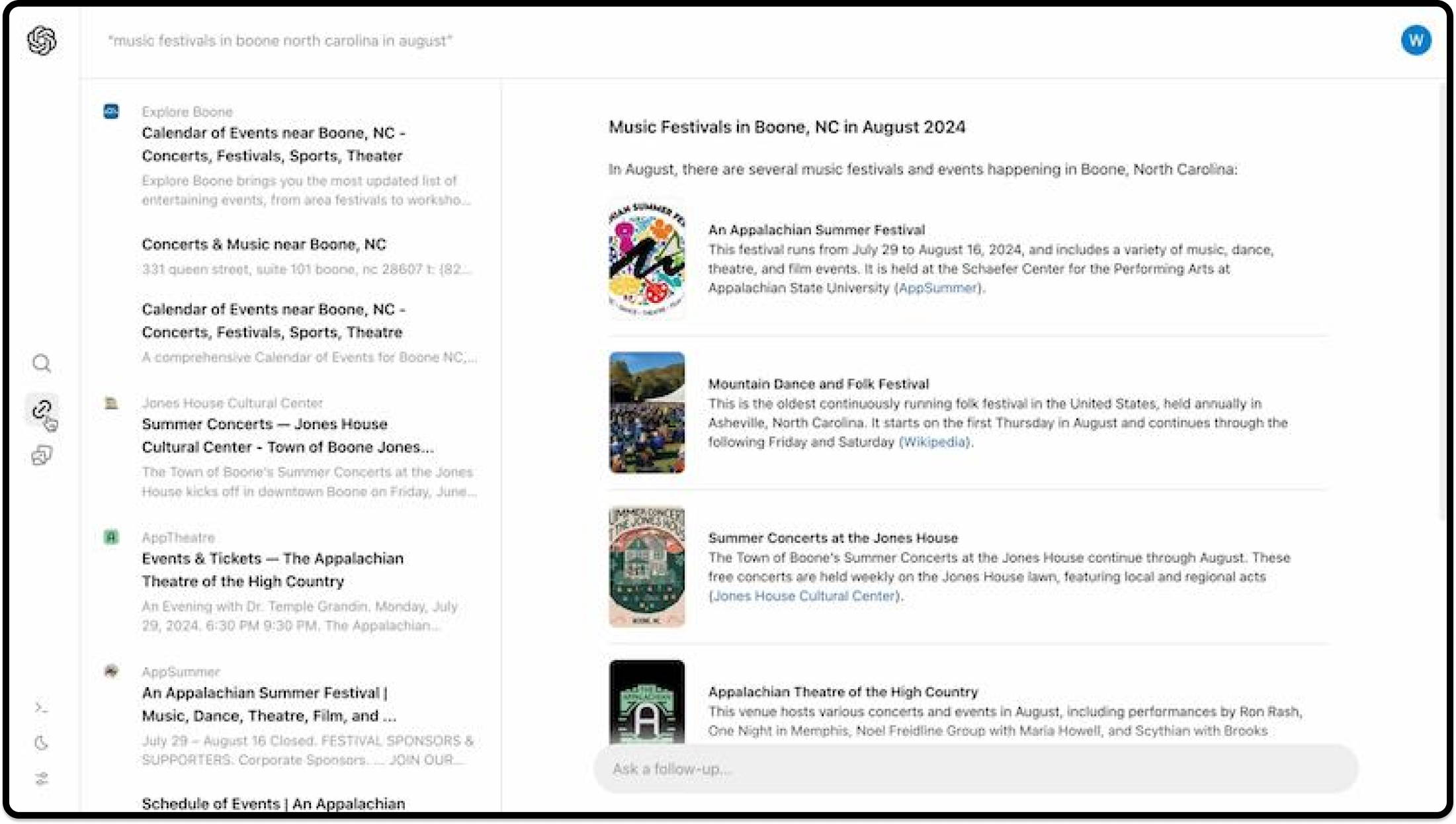
There are a lot of complex things happening in the background that make it different from Google. Performing a follow-up search in Google will produce a query-specific result whereas a follow-up search in SearchGPT will bring along all the contextual information from your previous searches. The search interface can also handle multi-step reasoning. This means that it can help you with comparison, deeper analysis, or building out specific step-by-step instructions.
The SearchGPT interface brings with it three main benefits:
- Enhanced User Engagement: Users crave interaction, and SearchGPT encourages deep engagement and interaction with its conversational style. It provides a new and fun way to get information.
- Efficiency: The ability for quick follow-ups makes getting to the bottom of things much faster. You’ll be able to get a full answer built from a variety of resources instead of just a single website or business.
- Personalization: With the power of contextual search, SearchGPT will tailor your answers to include all relevant information from previous searches. This gives you better results and answers that fit within the parameters that you define.
3. Real-Time Answers and Source Citations
Real-time answers and accuracy are more important than ever. We don’t know who or what to trust anymore. Google is all too familiar with this pain since their own AI search release contained a slew of misinformation.. Real-time answers combined with clear and easy-to-review citations provide users with a trustworthy experience that rivals search engines like Google.

Up-to-date information is vital when researching a rapidly developing concept like news, stocks, weather, or events. This information is also met with clear and transparent source attribution.
Each answer from SearchGPT has an explicit citation linking directly to the source making it easy to fact-check. When there are multiple instances of rivaling information, SearchGPT will link to multiple sources allowing users to make the determination if needed about the topic at hand. This is similar to Perplexities functionality. The difference with SearchGPT is that the sources are continuously pulled and not altered by content training its algorithm. This allows SearchGPT to pull the latest and greatest without having a bias.
4. Content Doesn’t Train The Algorithm
SearchGPT and OpenAI have made a deliberate choice to not have content they retrieve during searches train their underlying algorithms. This is more of an ethical choice made by OpenAI to respect intellectual property and keep publishers happy.
Users and publishers alike can trust that their data isn’t being exploited beyond their control. This decision only enhances the transparency of the platform and allows the AI model to remain focused on the data it was originally trained on. This removes biases that can come from self-training algorithms.
There are likely some cons and limitations to this notion as content training is a major way to develop and progress an AI, machine learning system. While results will still seem personalized, not allowing content to influence the algorithm can diminish the specificity you may get with Google.
There are likely some cons and limitations to this notion as content training is a major way to develop and progress an AI, machine learning system. While results will still seem personalized, not allowing content to influence the algorithm can diminish the specificity you may get with Google.
This approach directly rivals the mechanisms that allow the Google algorithm to operate and learn. This can expose an ethical dilemma to Google and its users.
8 SearchGPT SEO & AI Search Strategies
1. Deep Contextual Relevance
As we know, Google has developed far beyond keyword stuffing. SEOs and marketers need to go beyond surface-level targeted keywords to ensure your content covers a topic holistically. Semantic keyword inclusion and coverage is the best way to ensure you’ve covered all your bases. Not only does this help all search engines, but it will also help AI systems like SearchGPT understand the relevance and depth of your content.
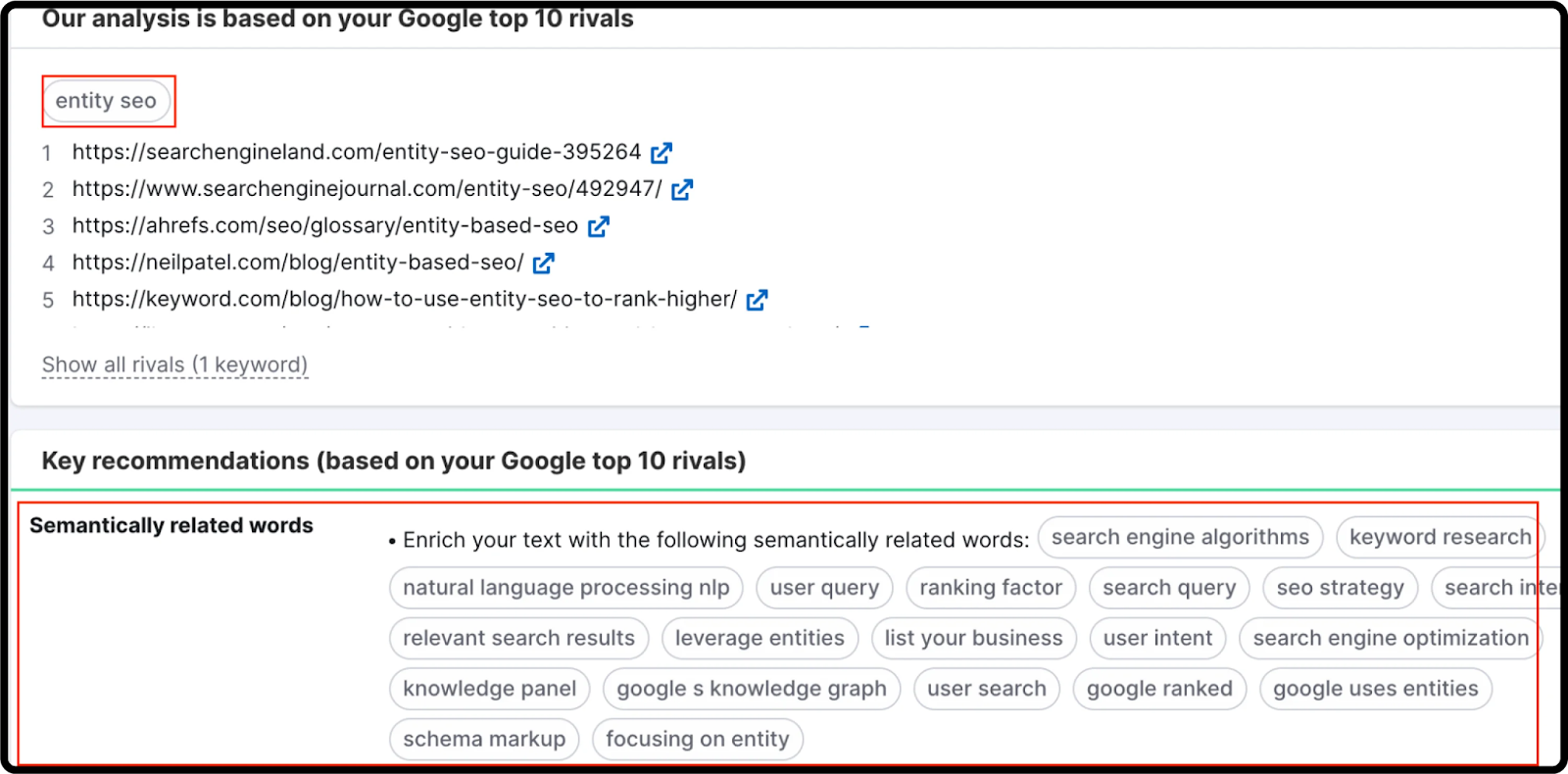
The other way to make sure your content has deep contextual relevance is by including relevant entities. Entity SEO and inclusion is the process of identifying related people, places, or organizations that SearchGPT and other algorithms might be looking for to establish context. You can’t talk about soccer without mentioning Messi or Pele, right? The same is true for the content you write, you need to include the adjacent entities to make the content holistic and relevant to search engines.
2. Conversational Content Optimization
SearchGPT is designed to understand and generate human responses so your content should anticipate and match these patterns. Write how you speak. We don’t need all the industry jargon that makes you sound smart. SearchGPT and other AI search engines are built on conversational content. These are meant to feel and act like a conversation you’re having with a friend of yours so your content should feel and sound the same way.
Good: “To get the most out of your gaming headset, just plug it into your computer’s USB port. Your computer should automatically recognize it. If you want to customize the sound settings, you can use the software that came with it. Need help? We’re here for you—just drop us a message.”
~vs~
Bad: “To utilize your gaming headset to its full potential, insert it into the USB port of your personal computing device. The operating system should detect the peripheral automatically. For further customization of auditory output, one may access the associated software suite provided. In the event of difficulties, support is available.”
3. User Experience and Engagement Signals
Engagement metrics are a part of ranking, the actions your users take on your website matter. This might mean you have to try things you’ve never done before in your content. Try interactive elements in your content, this will positively influence engagement metrics and send these signals back to AI search engines. Try to include things like polls, quizzes, and clickable elements that search engines like SearchGPT can identify and use as a positive signal.
Elements To Boost User Engagement:
- Compelling Headlines & Subheadlines
- Images, Video, Infographics
- Internal Links
- Quizzes, Polls, Calculators
- Clear CTAs
- Fast Loading Webpages
- Well-Formatted Text (Bullet Points, bolding, etc)
- Above-The-Fold Optimization
- Breadcrumb Navigation
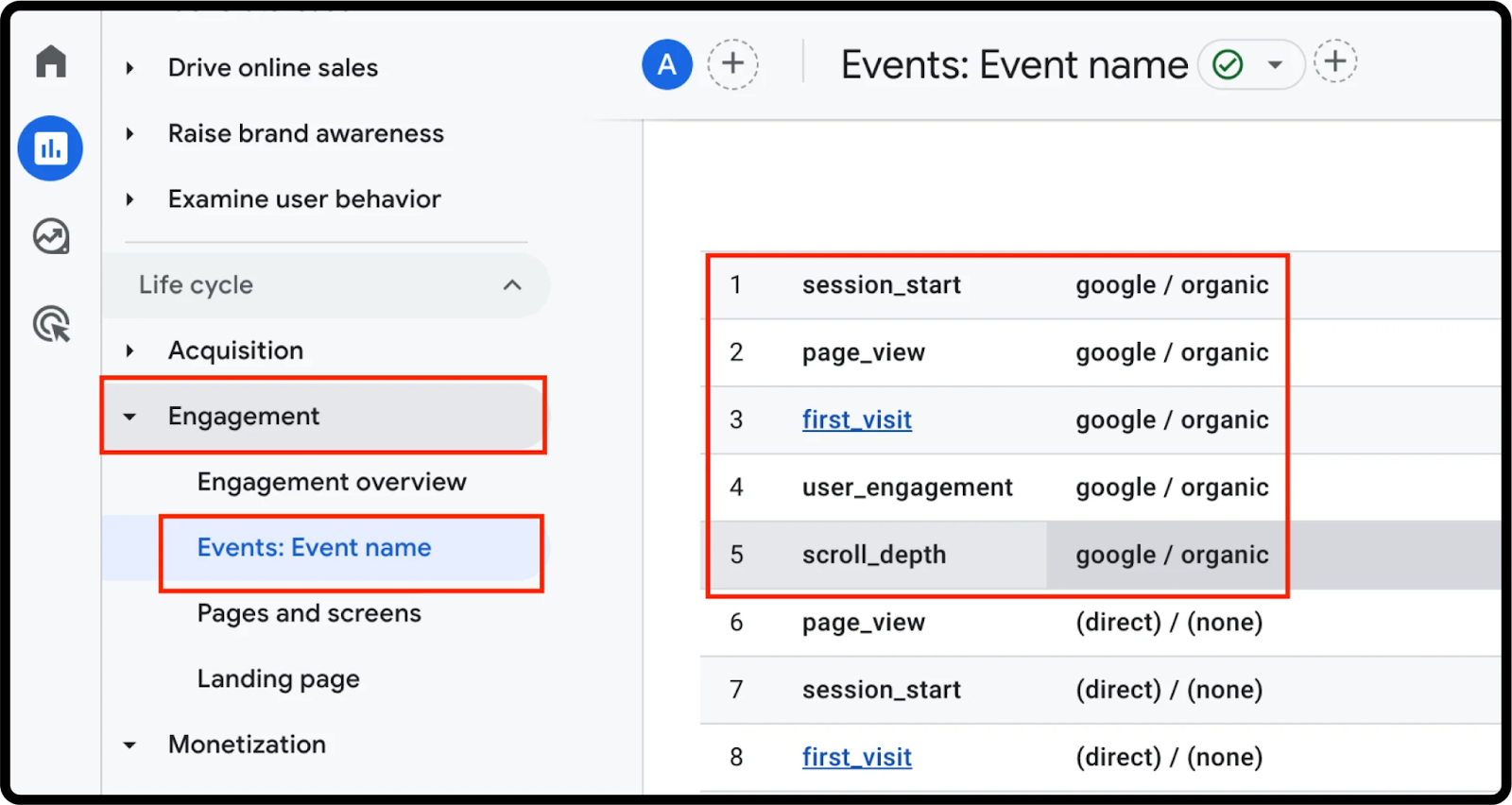
Improve dwell time. Get users to stay on your page for a longer period of time. Focus on reducing bounce rates by optimizing for user intent and then holding their attention with your content, images, and interactive elements.
4. Content Freshness and Timeliness
SearchGPT doesn’t train its algorithm on the content it retrieves, it lets the content do the work of explaining the concepts. This puts a big emphasis on having fresh content that is frequently updated. If the content isn’t training the algorithm, the search engine is reliant on the content it can find at face value so what do you think it will favor? Right, fresh, and accurate content. Give your evergreen content a once-over and update fast-paced topics more frequently as they develop.
Don’t underestimate the power of republishing. If AI search engines are looking for the freshest content, why won’t republish to a more recent date? If you’re continuously updating to provide deeper contextual information, you should also update the publish date. This can have influence over your “freshness” and allow you to be referenced more often.
Not only should your content be updated with the latest information, but you should also be timely. Creating content that addresses trending topics shouldn’t be made after the fact. You should be focused on creating content for important topics as they emerge and update them as new changes develop.
5. Rich, Structured Data Integration
Implementing structured data is a must. The future of search has a big spot carved out for it, and if you’re not already using it on your site, you should think about getting started—like yesterday.
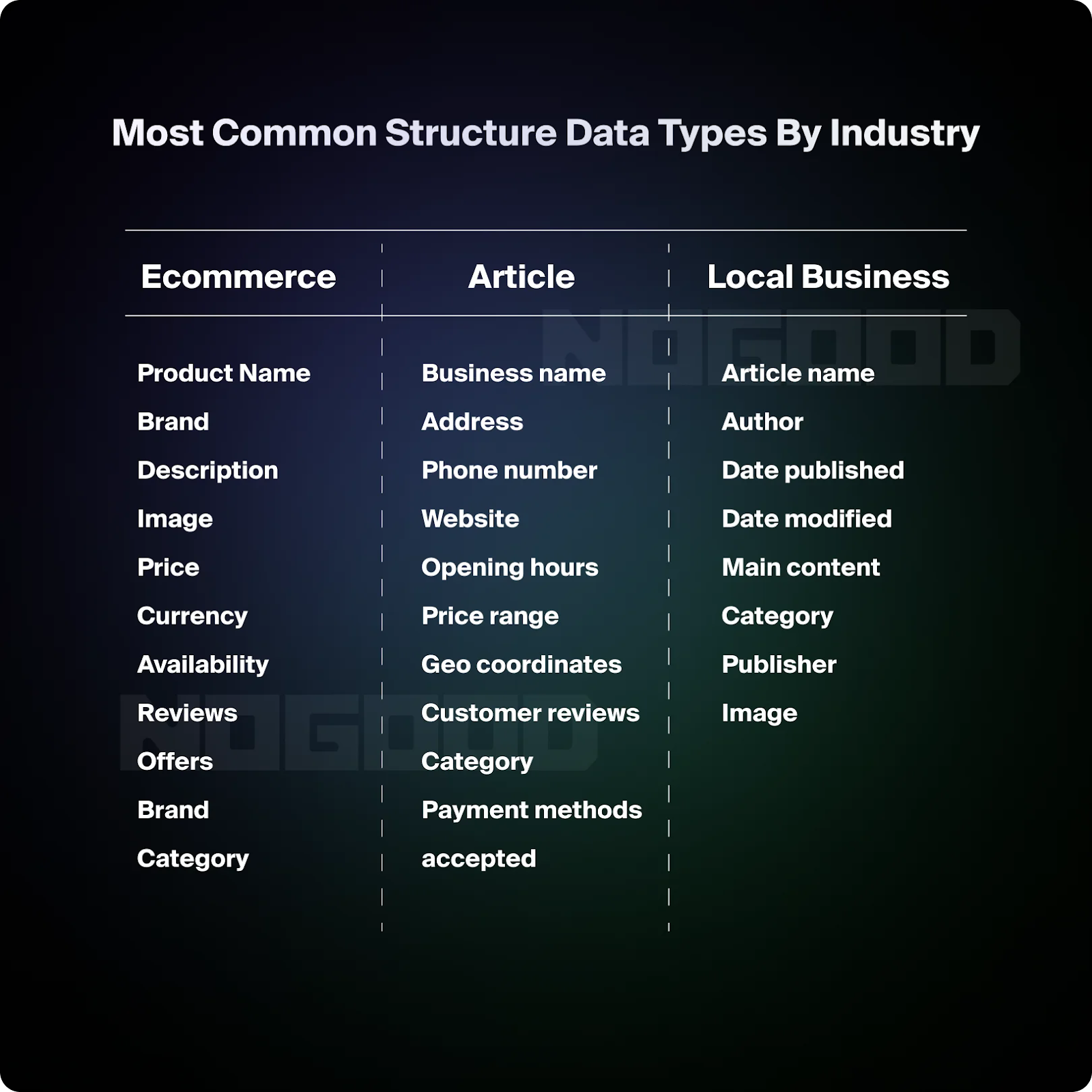
You can get a sense of what you already have working for you by viewing the “Enhancements” tab in Google Search Console. This will allow you to audit and expand on what you already have and can help you get a leg-up in organic visibility.
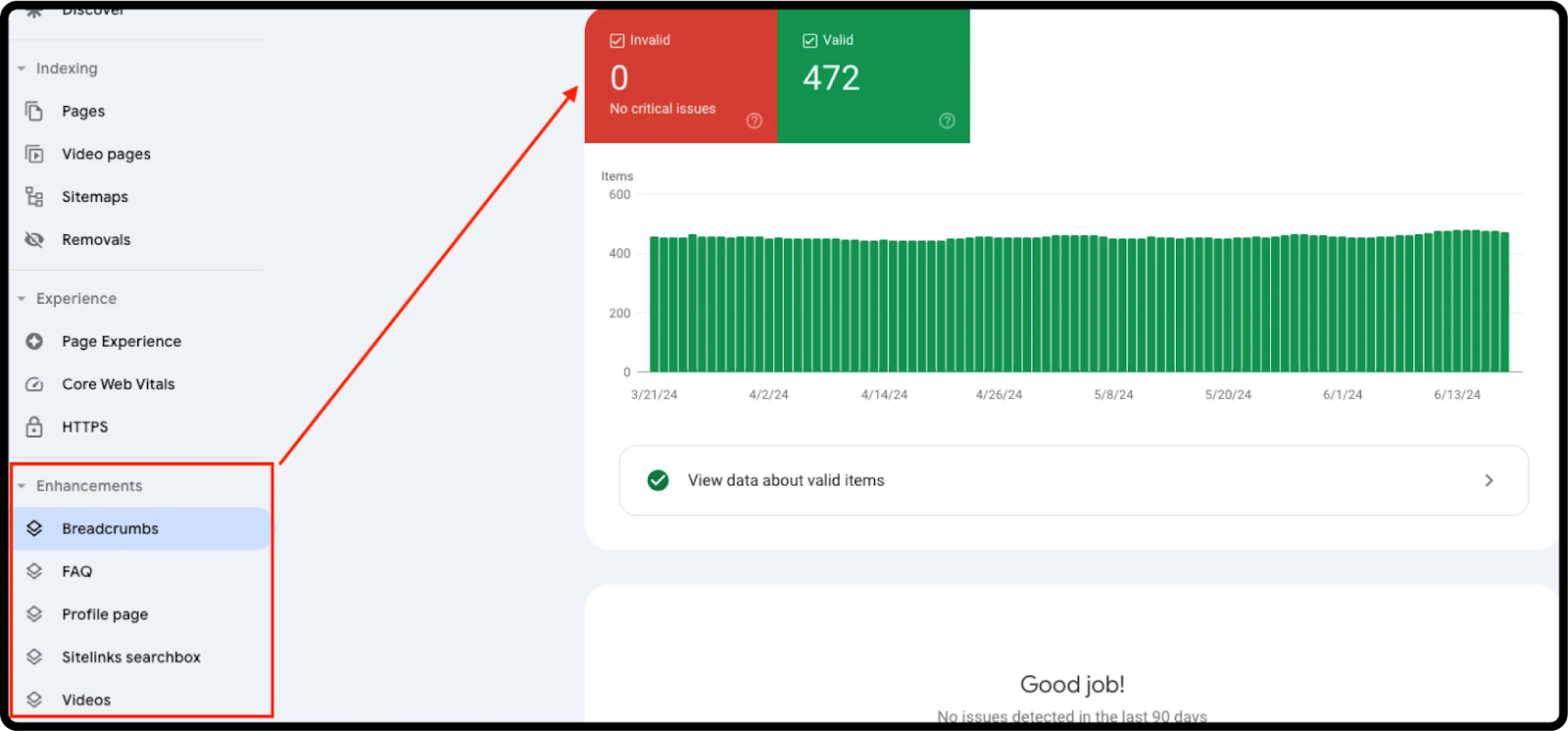
In addition to applying structured data to key elements. One tactic that can be used in your content is to include a concise summary at the beginning. This makes it easier for SearchGPT to extract the key information fast. Having the information at the top is easier than scanning the entire document for the information it’s looking for.
6. Content Diversity and Format Variety
You can’t keep giving search engines that same type of content every single time. It’s time to mix things up. Make sure to include diverse content formats like video, infographics, podcasts, and more. This will encourage SearchGPT to engage with pages that offer different content types, adding another layer of freshness to your content.
Search has changed quite a bit over the past couple years and user behavior has changed right along with it. Having diverse content allows both users and search engines to learn in a variety of ways. Someone might not be as keen to learn about a topic from a blog post and would rather watch a video, having options for these users and search engines is important for keeping up with user behavior.
7. Technical SEO for AI Readability
Never underestimate the power of a clean and clear site structure. Maintaining a well-organized HTML structure with clear headings, descriptive ALT text, and more is only going to improve your visibility in search. SearchGPT relies on well-structured information to interpret the key elements of the page so it can quickly repurpose this information and serve it to its users.
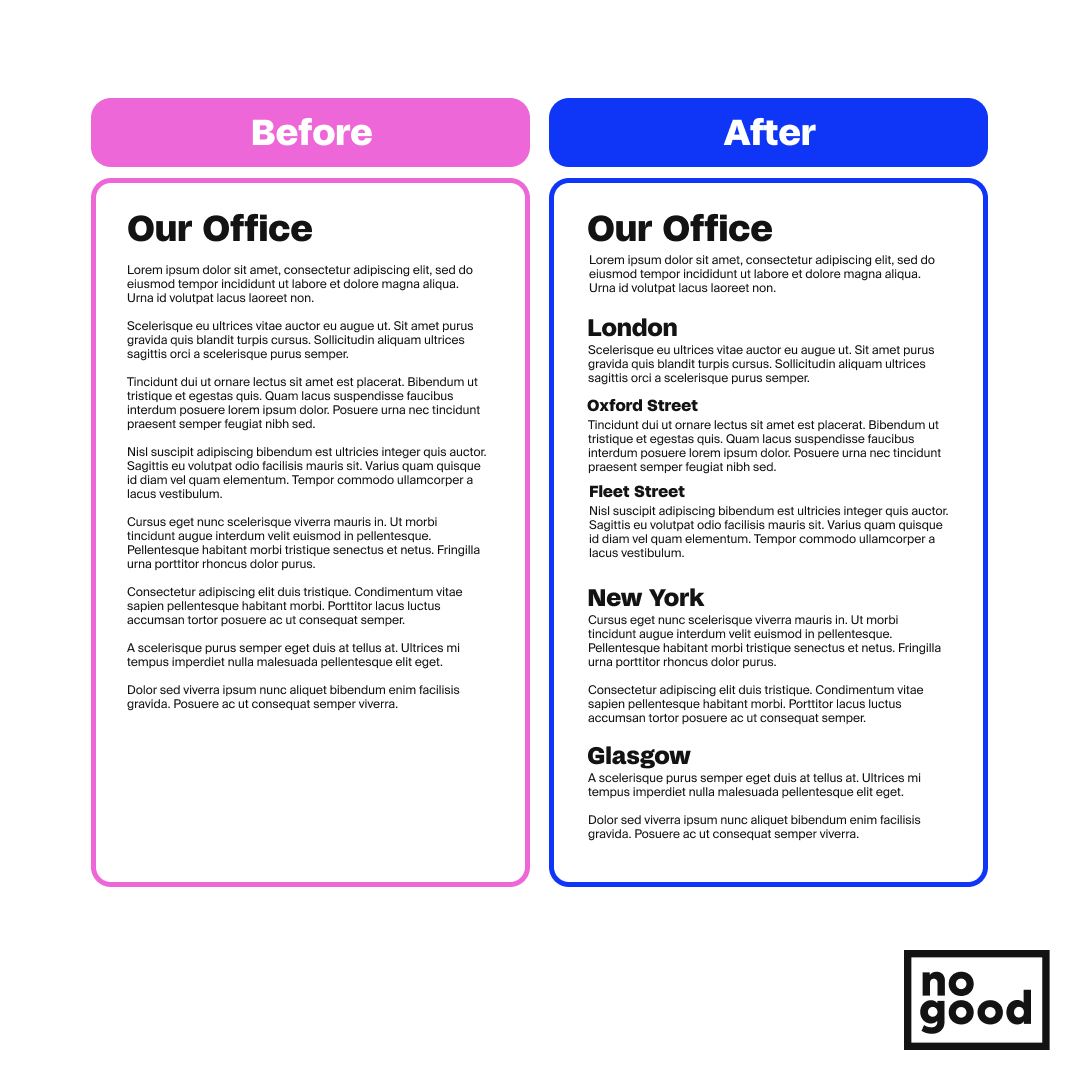
Site speed, website performance, Core Web Vitals. It goes by many names but remains a top method for improving AI search consideration. Having a fast-loading website is not a nice to have anymore, it’s a must. For every second you speed up a website, your conversion rate will improve 17%. User experience is judged by how fast a user can access content and come to a conclusive answer. Take a look at your Core Web Vitals report in Google Search Console and find opportunities to improve web load times.
Quick Speed Wins:
- Auditing Over-sized Images
- Lazy-Loading Images Below The Fold
- Implementing Font-Display Swap
- Preloading Heavy, Necessary Elements or Files

8. Leveraging User Data and Personalization
SearchGPT prioritizes content that aligns closely with user behavior so having user data, like engagement metrics, influence content personalization can improve your chances of your content being viewed and used in AI search results. This may closely align to the interactive elements you chose to put in your content, these elements can give you valuable insights as to how your users are experiencing your content so you can tailor it to their needs.
Another layer of personalization, more aligned with CRO, is dynamic content adaptation. This allows the content to change based on user interactions and previous visits. Changing or adding content will help drive valuable engagement metrics that SearchGPT may favor in their own results. For example, when you’re able to understand where a user is either getting frustrated or motivated to take an action, you can use that information to influence their behavior. If you notice that most people are getting frustrated clicking a non-clickable element as they attempt to make it to the next stage in their journey, you can quickly resolve these issues to allow them to move more seamlessly onto the next step.
4 SearchGPT & AI SEO Trends
1. Increased Focus on Voice Search
As SearchGPT and other AI models become more integrated, the importance of voice search will surge. SEOs should start prioritizing natural language and conversational content that is prioritized by these search functions before it’s too late.
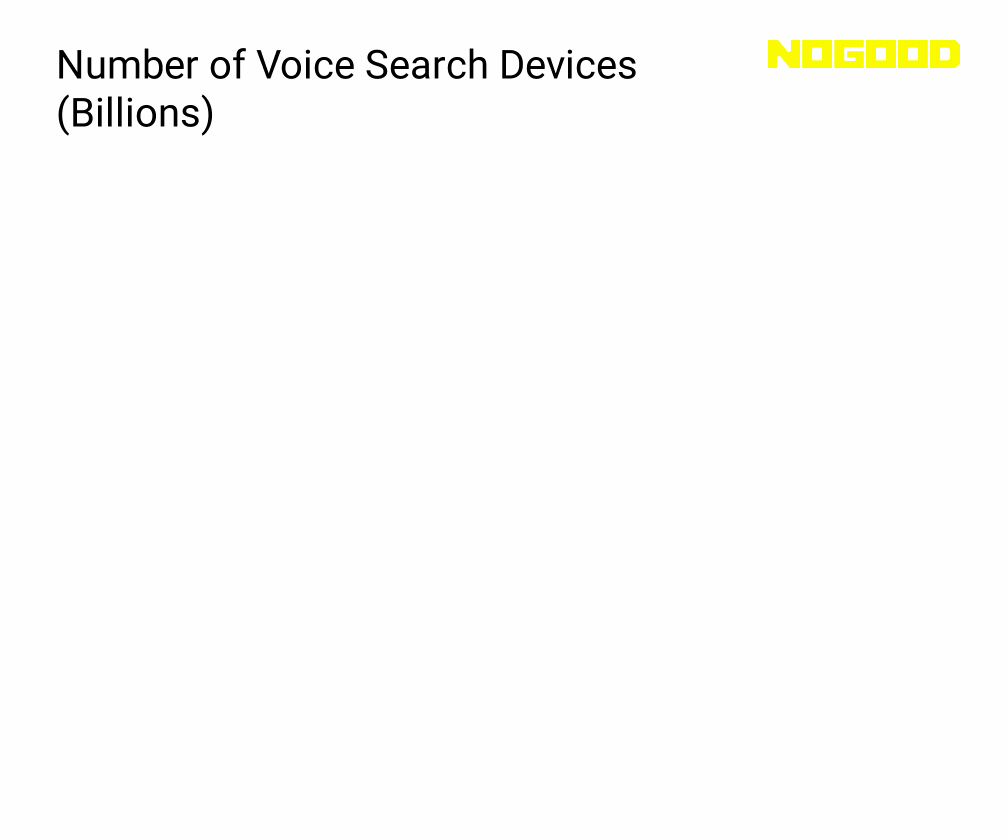
2. Evolution of E-E-A-T (Experience, Expertise, Authoritativeness, Trustworthiness)
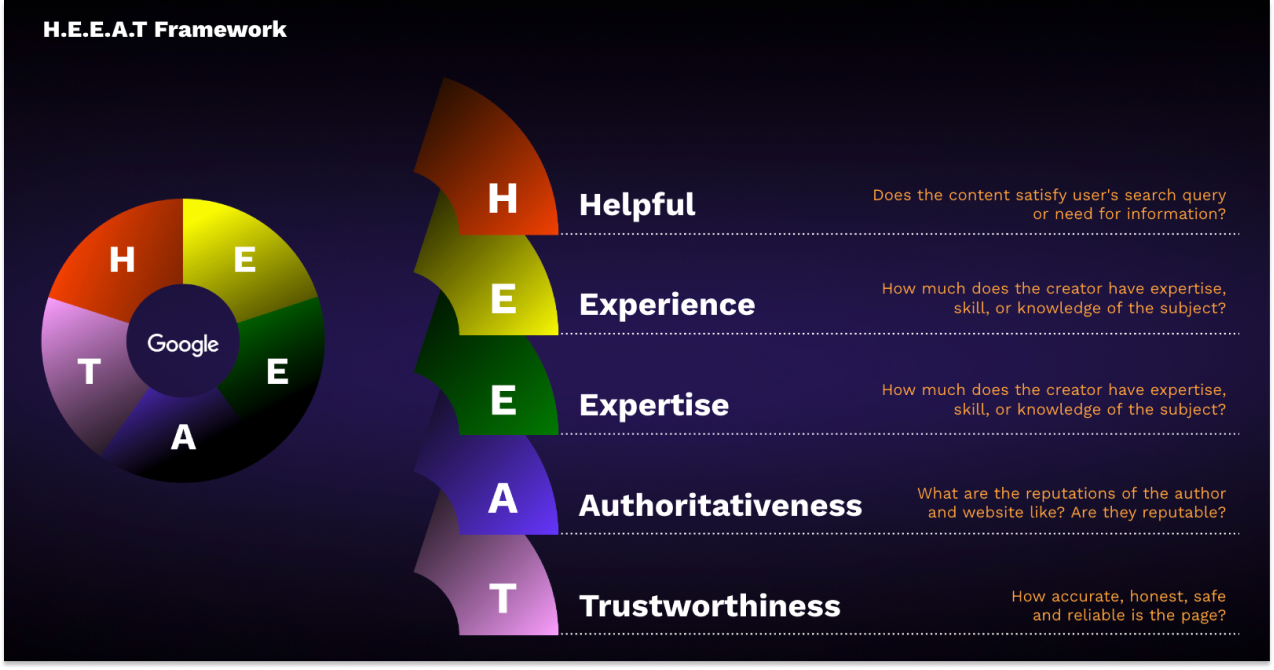
With AI being able to detect and evaluate authority signals arguably better than traditional search engines, E-E-A-T signals will likely develop further. Brands will need to double down on building trust and authority through other avenues aside from content. This means being aware of your overall brand sentiment across channels. This could mean implementing a social listening tool that gives you insight to how your brand if viewed and when there are positive or negative changes to sentiment. Helpfulness will also likely be appended to the already popular Google acronym H-E-E-A-T.
There is no doubt that there will be a bigger emphasis on content backed by verified expert sources. While AI will do a lot of the legwork in verifying the helpfulness of content, authors and brands can do more to add value to their content.
3. Data Privacy and Ethical AI Considerations
AI and privacy are often used in the same sentences as more and more people are concerned about how to protect themselves and their information against AI bots. Privacy-centric SEO will intensify and SEOs will need to navigate and balance personalization and privacy to remain compliant with user regulations. This means that it will be harder to track and understand behavior as users and legislation changes. Marketers will have to more agile in how they interpret data and understand user behavior.
The use of AI in content and optimization work will become more prominent as these technologies develop. This will undoubtedly have an impact on the industry as more and more marketers jump on the AI content creation train. This will put an emphasis on content accuracy, readability, and ethics. AI content has been traditionally easy to identify and doesn’t really stand a chance against 100% human-written content, but that could change.
4. Shifts in Link Building and Digital PR
AI’s ability to gauge and rank the quality and relevance of backlinks will cause traditional link-building tactics to go extinct. This will shift to a less-is-more approach, with an emphasis on quality over quantity. Generating backlinks won’t be as valuable as before. AI search takes this into consideration but aims to give all content a chance and let the best and most effective articles and information win.
Lessening the impact of backlinks will put a bigger emphasis on brand mentions and social content. As AI improves its understanding of brand influence and authority, it will be able to take more of this content into consideration when deciding on how to rank and what content to use in its answers.
SearchGPT – Changing the World Of SEO
There hasn’t been a period in search with as much volatility as we’ve seen in the last few years. The development of AI search functions has set a new precedent for SEOs and marketers. Having to rapidly adapt to the changes in search has made SEOs and marketers more agile than ever before.
If you already have a lot to keep up on and want to partner with a team of experts to help you navigate SearchGPT and AI search, we’re NoGood for that. We have a team of experts who act as an extension of your team to help you achieve rapid results that impact your bottom line. If you want to find out more about how we can help you achieve your goals, talk to us!






